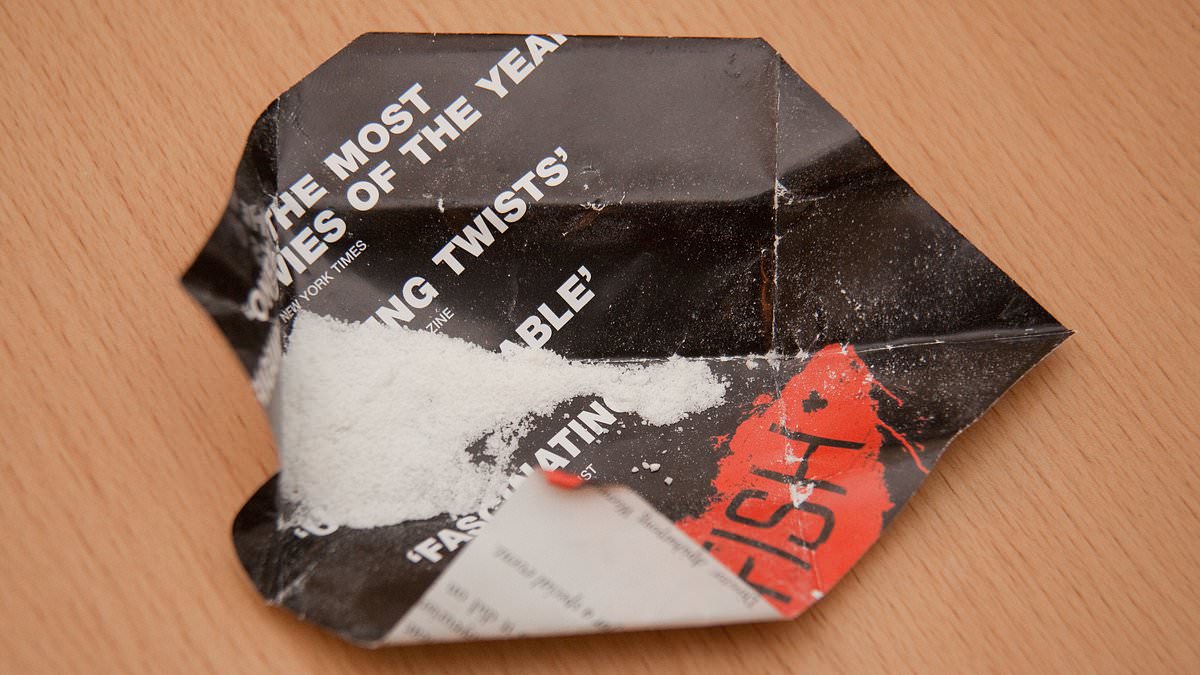By Editor Emily Stearn
NHS opens first ever ketamine clinic for CHILDREN – kids as young as 12 left hospitalised by toxic effects of party drug
READ MORE: Inside the rise of ketamine as Gen Z’s drug of choice
By EMILY STEARN, SENIOR HEALTH REPORTER FOR MAILONLINE
Published: 14:48 BST, 2 July 2025 | Updated: 14:58 BST, 2 July 2025
The NHS has launched the UK’s first ever ketamine teen addiction clinic amid a surge in youngsters hooked on the mind-altering drug.
Doctors at Alder Hay Children’s Hospital in Liverpool opened the service last month after seeing ‘increasing numbers’ of children attending A&E, including one as young as 12.
According to the specialist medics, teens had been left passing blood in their urine and even often wet the bed as a consequence of frequently taking the drug.
The service aims to treat the symptoms of the ketamine abuse as well as advise children on how to tackle dependency.
Experts today warned the drug, known as ‘K’ or ‘Special K’, is increasingly ‘available in some schools as well as out in the community’.
It comes as the dangers of ketamine have been thrown into the spotlight by the recent deaths of several celebrities.
These include RuPaul’s Drag Race star The Vivienne, who had a cardiac arrest after taking ketamine, and Friends actor Matthew Perry—whose death at the age of 54 in 2023 was caused by the ‘acute effects’ of ketamine and the opioid buprenorphine.
The drug is also an ingredient in ‘pink cocaine’, which One Direction star Liam Payne had taken before falling off a balcony in Argentina last year.
Special K, Ket, or Kit Kat (pictured), as it is also known, was popular as a party drug in the late 1990s, when it was commonly taken at all-night raves
He suffered ‘multiple traumas’ and ‘internal and external haemorrhaging’ from the fall.
Speaking to BBC Radio 5 Live Breakfast, Harriet Corbett, a consultant paediatric neurologist at Alder Hay Children’s Hospital who helped set up the service, said: ‘Sadly our youngest referral was for a patient who was 12, we’re seeing a lot of 14 and 15-year-olds.
‘There are an increasing number under the age of 16 which is why we’ve had to set up a clinic.
‘No one else as far as we know is seeing quite as many children in that age group.
‘We know it is available in some schools and out in the community as well. Parents can be really distressed and distraught.’
She added: ‘An increasing number of patients are coming into mostly the emergency department with symptoms from their ketamine use and those are increasingly from the bladder.
‘They really struggle because their bladder can’t hold enough urine and are often passing blood in their urine as well and having to get up at night, sometimes wetting the bed.
‘Those are pretty distressing symptoms for the children.
It comes as the dangers of ketamine have been thrown into the spotlight by the recent deaths of several celebrities. These include RuPaul’s Drag Race star The Vivienne, who had a cardiac arrest after taking ketamine
Speaking now in a bid to raise awareness of the dangers of ketamine, his family said James kept his initial addiction and relapse secret from them. The Vivienne pictured here with his sister Chanel and comedian Omid Djalili
‘Ketamine gets concentrated in the urine and then gets absorbed through the bladder wall and cause it to become inflammed.
‘That over time makes the bladder wall very stiff and can’t stretch in the way it normally would do.
‘Ketamine can cause permanent damage, so we want to see the children as early as we can to explain what it can do and what the long term picture of using ketamine looks like.’
Latest figures released by the Office for National Statistics (ONS), show one in twenty (4.8 per cent) 20 to 24-year-olds in England and Wales last year admitted to taking the drug.
This is despite Gen Z increasingly shunning other types of drugs including cannabis, cocaine and MDMA, also known as ecstasy.
Nearly seven per cent of today’s 16-24 year olds have experimented with ‘Ket’—commonly taken at all-night raves.
Government figures also show ketamine usage has risen by 85 per cent in just a year between 2023 and 2024.
But deaths related to the drug, too, are up a shocking 650 per cent on 2015 and now average around one per week, according to the ONS.
Here, we reveal how the substance — now used in private clinics for its alleged anti-depressant effect — can wreak havoc on the body within an hour of taking one large hit, leaving users paralysed, unable to breathe and choking on their own vomit
Yet despite these threats, social media users regularly make light of its impacts—with a trend for videos showing users in ‘k-holes’—the disassociate state associated with heavy usage.
Experts have long warned that rising ketamine use has been driven by both its affordability and availability.
It is thought to cost around £20 a gram compared to £40 a gram for MDMA and £100 for cocaine.
The drug, which comes as a powder and is usually snorted, can lead to a relaxed and dream-like sensation, but taking too much can cause temporary paralysis.
Longer-term use can lead to memory loss, mental health problems and organ damage.
Tolerance to the drug is known to build quickly.
This leads to users needing more and more to feel the same high, which increases the risk of overdosing or experiencing adverse side effects.
It works as an anaesthetic by blocking the neurotransmitter N-methyl-D-aspartate (NDMA), which controls actions in the nervous system.
The VivienneWalesNHSFriends
Share or comment on this article:
NHS opens first ever ketamine clinic for CHILDREN – kids as young as 12 left hospitalised by toxic effects of party drug
Add comment
